On January 26, 1837, President Andrew Jackson approved Michigan’s bid for statehood.
When the first Europeans arrived in Michigan, about 15,000 Native Americans lived in the region. Most of these people spoke Algonquian languages, but some spoke Iroquoian. Michigan’s Upper Peninsula was sparsely populated.
Around 1620, Étienne Brulé of France explored the Upper Peninsula. Most historians believe he was the first European to visit Michigan. Brulé traveled to Michigan from Quebec, under the orders of Governor Samuel de Champlain of New France (Canada). In 1634, Champlain sent Jean Nicolet to search for a route to the Pacific Ocean. Nicolet sailed through the Straits of Mackinac and explored the Upper Peninsula. In 1660, Father René Ménard established a Jesuit mission at Keweenaw Bay. The first permanent settlement was created by Father Jacques Marquette at Sault Ste. Marie in 1668.
During the late 1600s, Father Marquette; Louis Jolliet; René-Robert Cavelier, Sieur de la Salle; and many other French explorers traversed Michigan, and mapped its lakes and rivers. By 1700, the French had built forts, missions, and trading posts in several locations in both the Upper and Lower peninsulas. Antoine de la Mothe Cadillac founded Fort Pontchartrain in 1701. This settlement grew to become the city of Detroit.
France and Great Britain struggled for control of North America during the late 1600s and 1700s. By 1763, France was defeated and was forced to relinquish control of most of its North American colonies. That year, the Ottawa Native American Chief Pontiac led an uprising against the British. The Natives massacred the British at Fort Michilimackinac and attacked several other forts. Pontiac’s forces laid siege to Detroit for five months, but were eventually turned away. In 1774, the British made Michigan a part of the province of Quebec.
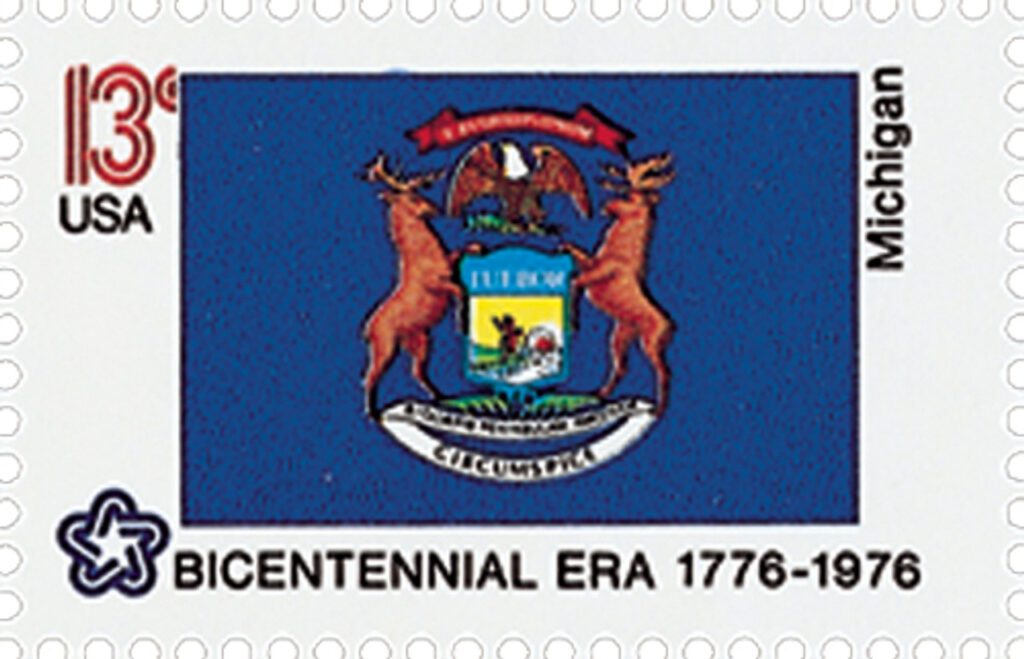
During the Revolutionary War, the British sent forces of native Americans and Europeans from Michigan to attack American settlements in the East. In 1783, the war ended, and the Americans gained control of Michigan. However, the British kept control of Detroit and Fort Mackinac until 1796, to control the valuable fur trade.
In 1787, Michigan became part of the first territory organized by the US government – the Northwest Territory. A section of Michigan was organized as part of the Indiana Territory in 1800, and by 1803, all of Michigan was in Indiana territory. In 1805, Congress created the Territory of Michigan, which included the Lower Peninsula and the eastern end of the Upper Peninsula. The British took Detroit and Fort Mackinac during the War of 1812. American forces took Detroit in 1813, but Fort Mackinac remained in British hands until 1814, after the war had ended. Many new settlers from the East came to Michigan when the Erie Canal was completed in 1825.
In 1835, a constitutional convention was held, and on October 5, 1835, the people ratified the state’s constitution. However, Congress delayed the state’s admittance to the Union due to a dispute between Michigan and Ohio over the Toledo area. Congress settled this dispute in 1836 by giving the “Toledo Strip” to Ohio and the entire Upper Peninsula to Michigan. Michigan became the 26th state to join the Union on January 26, 1837.
In 1842, Michigan obtained Isle Royale and the Keweenaw Peninsula in a treaty with the native Americans. It was discovered that the western portion of the Upper Peninsula was an important source of minerals. In 1845, iron ore mining began in the Negaunee area. The Upper Peninsula quickly developed a thriving mining industry. The need to ship ore to the iron and steel centers on the Great Lakes resulted in the construction of the Soo Canal, completed in 1855. The Soo Canal allows ships to pass between Lake Superior and Lake Huron.
During the American Civil War, Michigan soldiers fought in the Union Army. The Fourth Michigan Cavalry was responsible for capturing the president of the Confederacy, Jefferson Davis, on May 10, 1865, near Irwinville, Georgia. In a thirty-year period, from 1870 to 1900, Michigan’s population more than doubled. The lumber industry developed rapidly. Huge amounts of land were cleared as large numbers of farmers settled in the area. Michigan became one of the nation’s leading states in supporting public education. During this period, the state’s tourist industry also began to develop, aided by the promotions of railroads and steamship lines.
Ransom E. Olds founded the Olds Motor Works in Detroit in 1899. Within two years, the factory was mass-producing Oldsmobiles. In 1903, Henry Ford founded the Ford Motor Company in Detroit. Detroit quickly became the center of the nation’s automobile industry. Between 1935 and 1941, the United Automobile Workers Union established its representation of workers in the automobile industry.
During World War I, Michigan’s industrial might aided the war effort greatly. Factories built trucks, armored vehicles, airplane engines, and more. Great improvements were made to the state’s roads. This was a great benefit to the automobile industry. The Great Depression had a great impact on Michigan’s economy. Federal programs like the Civilian Conservation Corps and Works Progress Administration had a large impact in Michigan. During World War II, Michigan’s entire automobile industry again converted to manufacture of war-related products. These included tanks, airplanes, ships, and more.
After World War II, the state’s automobile industry thrived. But, during the late 1950s and early 1960s, and again during the late 1970s and early 1980s, economic slumps hurt the factories. In 1980, Michigan had the highest unemployment rate of any state. By the end of 1983, automobiles sales increased, relieving economic woes. Automobile production continues to be important to Michigan, as it leads the nation in the production of cars. However, state leaders have continually worked to bring new industries to the state, diversifying the economy.
| FREE printable This Day in History album pages Download a PDF of today’s article. Get a binder or other supplies to create your This Day in History album. |
Discover what else happened on This Day in History.


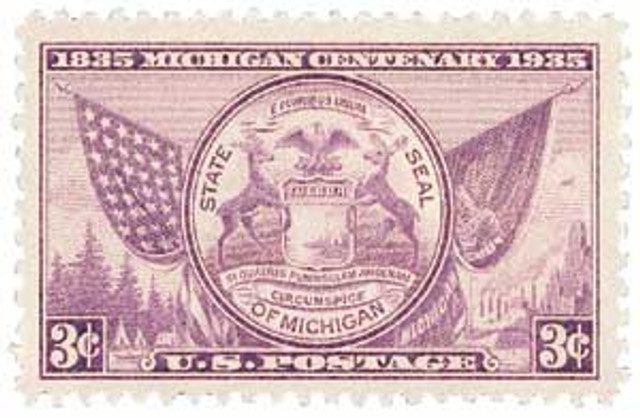
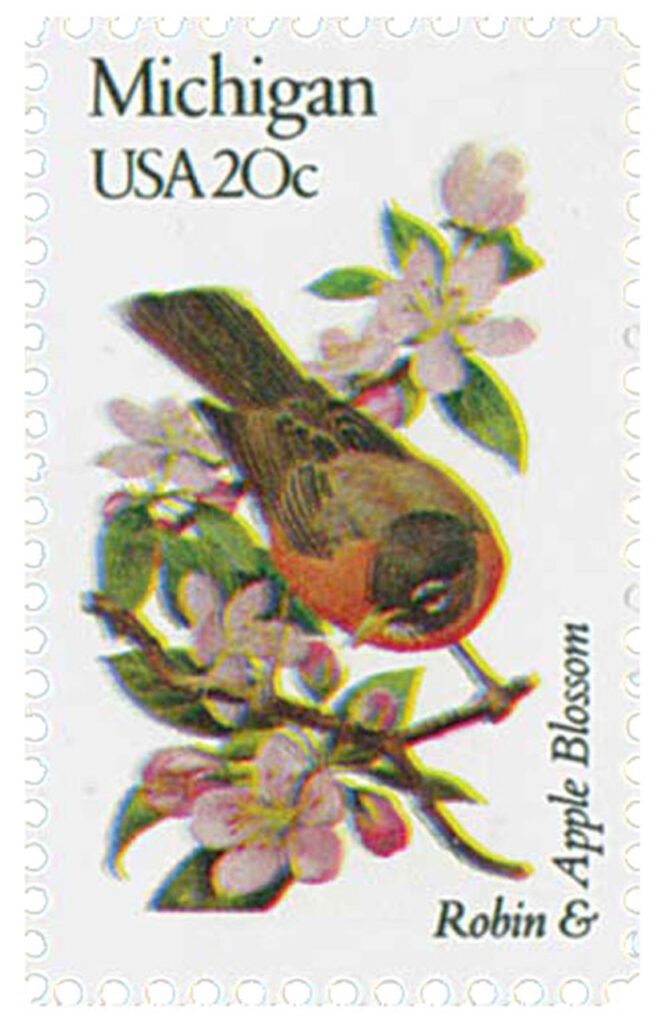

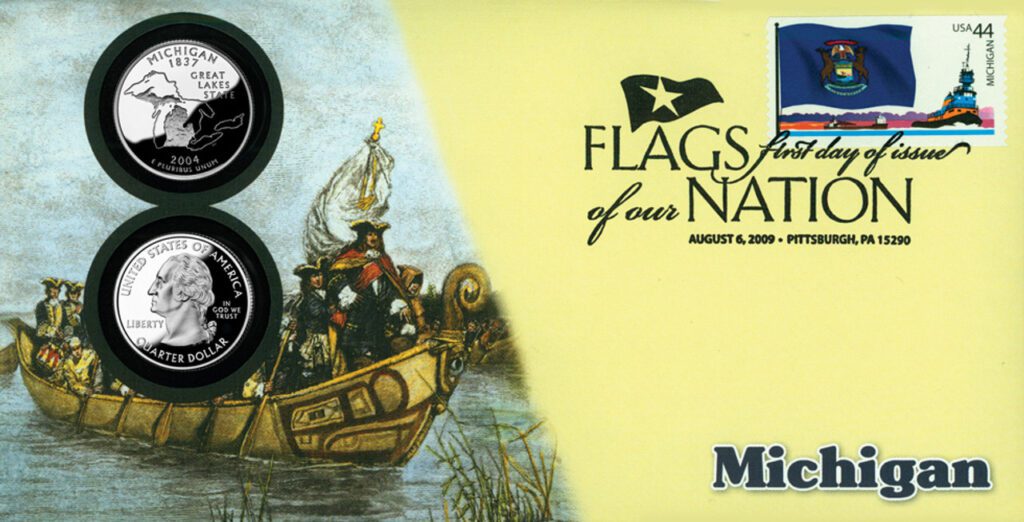
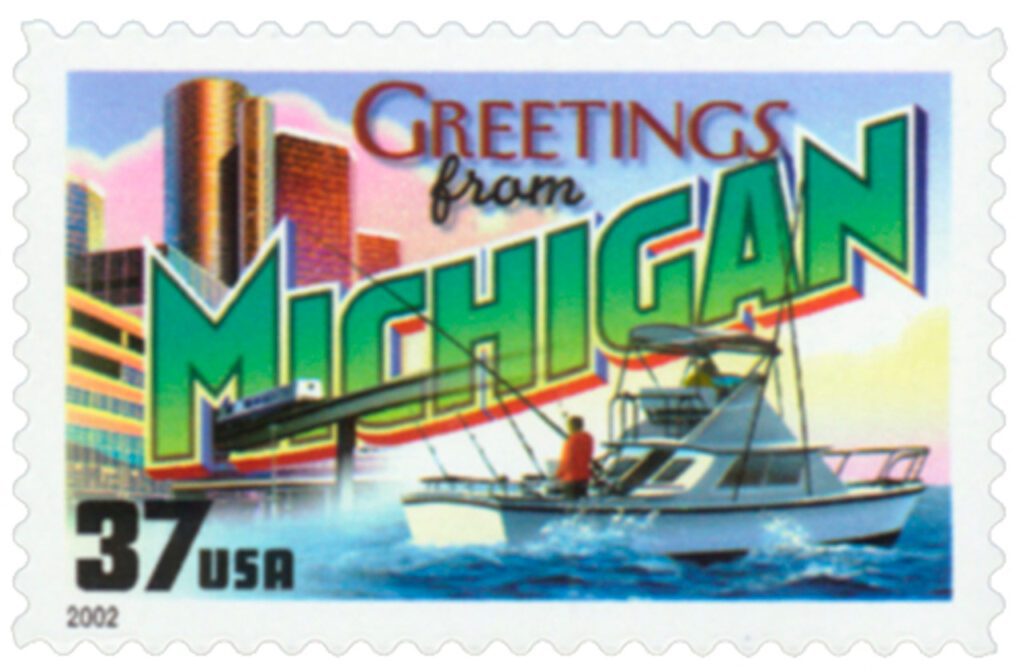
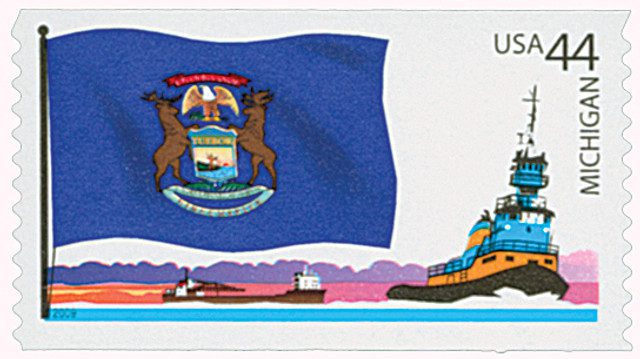
I had no idea that Detroit and Mackinac Is. had been in British hands as late as 1814. I’m a college professor, but I learn something new from this post every day. Thank you.
Yep, at I tell my students, Ohio got Toledo, Michigan got the UP, and Wisconsin got screwed by losing the UP to Michigan. BTW, Nicolet continued down into Lake Michigan, exploring its west coast, and put into the area which later became Milwaukee, my home town.
This is a great history lesson.
Great information about Michigan! Pontiac, the Ottawa leader, must have been a skilled fighter and tactician.
Happy Anniversary Michigan! A beautiful state! The Great Lakes are awesome! Thanks, Mystic.
Wonderful historic synopsis on a state’s history. Thank You!
No need to go to school to learn about USA’s rich history. Mystic and the dedicated staff should be awarded an honorary degree for their in depth knowledge and writing technique. Anybody interested in history as myself, always finds very useful information no matter what subject you are dealing with.
Great learning experience for young and old alike.!
What you are doing is truly remarkable…..please don’t stop.!!!
Frank Sierra
I agree whole heartedly. Thank you, Mystic staff for a very excellent history lesson each and every day.
The great state of Michigan. Who’d have known that decades later the horrible city of Detroit would declare bankruptcy.
Too bad that Chief Pontiac wasn’t a civil engineer with the Water Dept
Instead of Soo Canal, a better term for the junction of Lakes Superior and Huron would be Soo Locks. The mean water level of Lake Superior is 21 ft above that of Lakes Huron and Michigan. For that reason, a pair of locks were built so the ships, primarily large iron ore carriers, could negotiate that elevation difference.
I rode through there once on a tour boat–we had the huge locks to ourselves, It takes only minutes for a lock to fill from Lake Superior, for vessels going into that lake, or empty into Lake Huron, for vessels going the opposite way. The locks operate totally by gravity water flow–no pumps, only gates.
Lakes Huron and Michigan are connected by the Strait of Mackinac. They are actually one lake–the only two Great Lakes with the same water level.
The name Michigan is the French form of the Ojibwa word mishigamaa meaning “large water” or large lake.
Stamp #1069 calls them Soo Locks. It’s the only term I’ve ever heard. I’m not sure why it wasn’t mentioned. Also, is this the same Mackinac that has the bridge in stamp #1109??? There you go, two more great stamps representing your area.